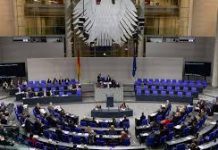
Before assuming the roles of President at Coge Events and General Commissioner of the EuroSatory show, General Charles Beaudoin served as the Deputy Chief of Staff of the Army for Plans and Programs. He retired from his military career in 2020 and has since been actively commenting on trends in land weaponry.
During an interview with La Tribune regarding the 2024 EuroSatory show, General Beaudoin discussed the current state of the army. He noted a significant evolution: after decades of external operations, the army has transitioned from a heavily mechanized armored force to a more agile, lightly armored expeditionary force.
General Beaudoin attributed this transformation partly to the “peace dividends” following the Cold War, which necessitated substantial cutbacks, significantly impacting the army’s ammunition stockpile and training programs, both of which he described as severely diminished.
Reflecting on past and present conditions, General Beaudoin highlighted the challenges faced by today’s military compared to the era of the Warsaw Pact. He emphasized that while simulation training has filled some gaps, the army currently faces constraints in numbers, equipment, and comprehensive training at high levels.
Regarding military budgets, General Beaudoin pointed out that cuts and reallocations between 1990 and 2017 forced the army to adapt to asymmetric warfare, focusing on high-intensity conflicts despite resource limitations. He acknowledged that the army currently faces readiness challenges in terms of assets, training, medical evacuation capabilities, and preparation for intense conflicts.
General Beaudoin expressed cautious support for the SCORPION program, expressing reservations about whether vehicles like the Griffon, Serval, and Jaguars could effectively shoulder the same roles as older armored vehicles in major conflicts. He stressed the importance of maintaining and potentially expanding the Leclerc tank fleet, despite challenges in its future development.
In conclusion, General Beaudoin argued for a shift towards a well-balanced, fully mechanized armored corps, acknowledging the financial and institutional hurdles that such a transformation entails amidst competing priorities in public finances and defense funding.




